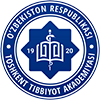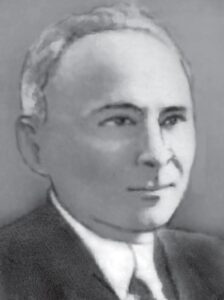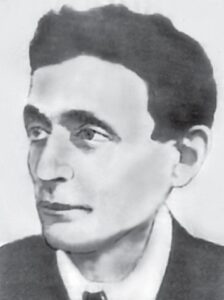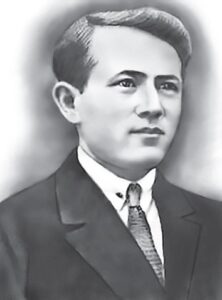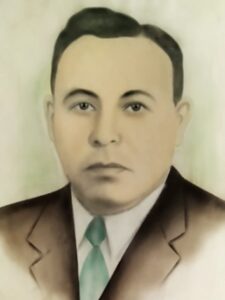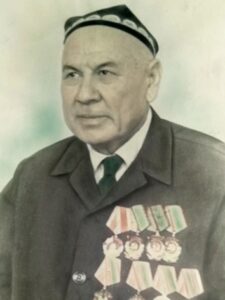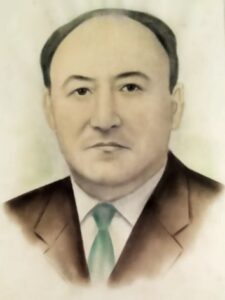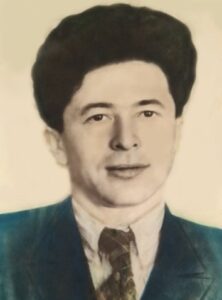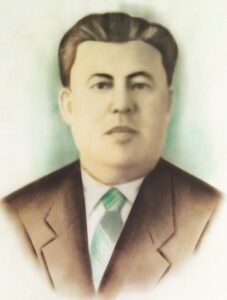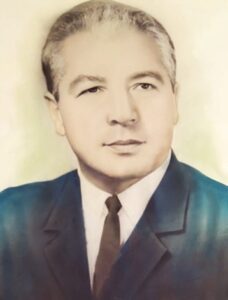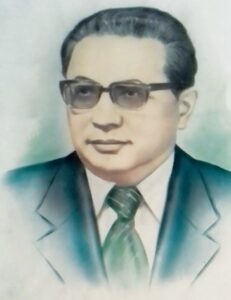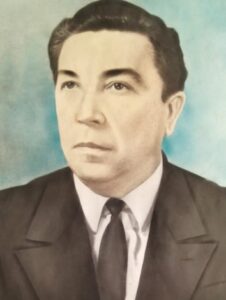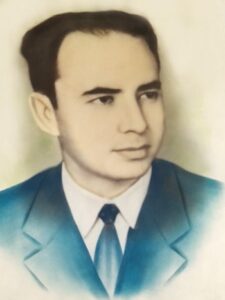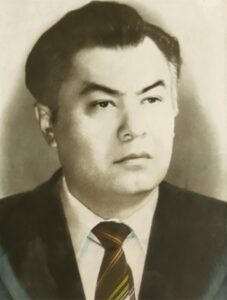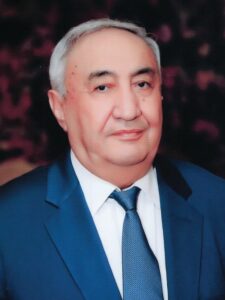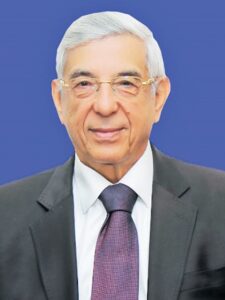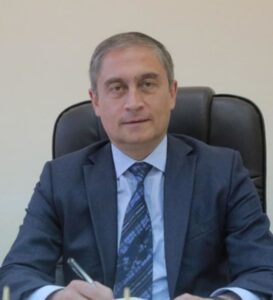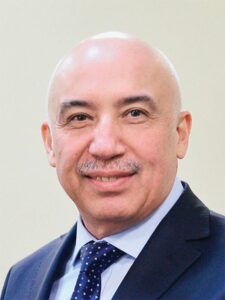(Central Asian medical institute until 1935, Tashkent state medical institute until 1990)
The medical faculty of Central Asian State University was transformed into an independent medical institute in 1931. The first director of the institute was G.P. Fyodorov (1931). H.U. Umarov (1931– 1932), who was a dean of the medical faculty in the same year, in 1931. During this period, a number of positive measures were taken to accommodate the departments and clinics of the institute in the cadet corps, in order to provide the departments with specialists, to improve the material and technical base of the institute.
In 1932 B. Sattarov (1932–1936) was appointed as a rector of the institute. During this period, Central Asian Medical Institute was transformed into Tashkent Medical Institute. The material and technical condition and staffing of the institute had been improved.
In 1936 E.Yu. Shurpe was appointed as a rector, in 1937 V.D. Shtiben and then U.Nedrit (1937–1938). During this period the number of students increased. The issue of providing teaching staff had been solved at the expense of invited specialists from other institutions, cities, especially Moscow and Leningrad. By this time, the different methods of diagnostics and treatment of many diseases in the Institute clinics had been improved.
M.U. Mirsagatov. In 1938 he was appointed as a rector of the institute. By this time, the government of the republic began to allocate more funds for the medical institute. The bases of the Institute were significantly expanded. Clinics for infectious diseases, oncology, orthopedics were built, clinics for dermatovenereology, otorhinolaryngology, tuberculosis, neurology and the department of radiology were renovated. Hostels had beem built for students and teachers.
In 1940 – 1941 the institute was headed by Boris Isayevich Berliner, MDSc, Professor. In 1943 he defended his doctoral dissertation on the topic “Krukenberg operation and its significance in improving the function of the amputation culture of the forearm” He was an author of more than 90 scientific papers. 1957–1962 – a head of the Department of Traumatology and Orthopedics. He was awarded with the Order of the Red Banner of Labor and the Badge of Honor medal.
Muminov Yokub Karimboboyevich candidate of medical sciences, associate professor was a rector in 1941 -1944. During the Second World War various organizations were located on the territory of the institute during the Second World War, in particular, an evacuation hospital. As a result, the number of classrooms, laboratories and departments decreased, several employees of the institute were sent to the front. This had a negative impact on the teaching process.
From 1945 to 1947 H.Z.Zokhidov was a rector of the Institute, MD, Professor, Honored Scientist of Uzbekistan. In 1959 he defended his doctoral dissertation on the topic “Topographicanatomical relationships of the motor and sensory portions of the trigeminal nerve in the brain stem at the age aspect”. He was an author of more than 55 scientific papers. In 1947–1951 he was the Minister of Health of the Republic of Uzbekistan, in 1957-1961.he had worked as a head of the Department of Normal Anatomy. He was given two-times of cavalier with the Order of the Badge of Honor, winner of the medal “For Merit to the Great Patriotic War”, the medal “Labor Glory”, the badge “Excellent Health Care Worker”.
In 1947–1950 Turakulov Yorkin Kholmatovich took the responsibility of the rector of the Institute. He was a Doctor of Biological Sciences, Professor, Honored Scientist of Uzbekistan, Academician of the Academy of Sciences of the Republic of Uzbekistan, laureate of Lenin Prize, participant in the World War II. In 1959 he defended his doctoral dissertation on the topic “Biochemistry of thyroid hormones in some forms of thyroid pathology”. He was an author of more than 400 scientific papers on endocrine diseases. He had trained 12 Doctors of Science and more than 50 Candidates of Science.
Turakulov Yorkin Kholmatovich was a former member of the Presidium of the AllUnion Society of Biochemists, a chairman of the Society of Biochemists and Endocrinologists of Uzbekistan, he worked as an editor of the journals “Fan va turmush’’, “Biology of Uzbekistan’’. He was awarded with the Orders of the Red Star, the Red Banner of Labor and the Order of the October Revolution.
In 1950-1965 Gulomov Abdumalik Gulomovich, candidate of Medical Sciences, Associate Professor headed the Institute; he participated in the Second World War. He defended his PhD thesis in 1940, an author of more than 60 scientific papers on epidemiology and microbiology of infectious diseases. He was a Deputy of Tashkent City Council of Workers. He was awarded wish the orders of the Great Patriotic War of the first degree, the Red Star, the Red Banner of Labor and the medal of Labor Glory.
Zufarov Komiljon Akhmedzhanovich, Doctor of Medical Sciences, professor, Academician of the Academy of Sciences of the Republic of Uzbekistan, Honored Scientist of Uzbekistan, participant in the Second World War was a rector of the Institute in 1965– 1971. Zufarov K. A. had trained 32 Doctors of Science and more than 106 Candidates of Science. He was an author of more than 200 scientific papers on topical issues of histology, member of the Scientific Council of Electron Microscopy of the Academy of Sciences of former USSR, member of the Scientific Council “Cytology” of the Academy of Sciences of Uzbekistan, Chairman of the Coordinating Council of Morphologists of Central Asia and Kazakhstan and a Chairman of the Society of Gastroenterologists of Uzbekistan, member of the editorial board of the journal “Uzbekiston Tibbiyoti”, the international journal “Zeitschrift fur mikroskopish-anatomische Forschungc”
Gastroenterologists of Uzbekistan, member of the editorial board of the journal “Uzbekiston Tibbiyoti”, the international journal “Zeitschrift fur mikroskopish-anatomische Forschungc”
During 1971 – 1984 Oripov Uktam Aripovich was a rector of the Institute. He was a Doctor of Medical Sciences, Professor, Honored Doctor of the Republic of Uzbekistan, Honored Worker of the Republic of Uzbekistan, Academician of the Academy of Sciences of the Republic of Uzbekistan, the Russian Academy of Medical Sciences and the New York Academy of Sciences, Honorary Doctor of Budapest Medical University named after Zemmelweis, winner of the Beruni State Prize. He prepared 25 doctors of sciences, about 80 candidates of sciences and an author of 450 scientific papers, 21 textbooks and manuals, more than 30 patents.
In 1984–1987 Makhmudov Orkhan Sirojiddinovich MD, Professor, Honored Scientist of Uzbekistan, a winner of the Beruni State Prize was a rector of the Institute. In 1966 he defended his doctoral dissertation. Makhmudov O.S. had trained more than 10 Doctors of Science and 50 Candidates of Science. He served as a Deputy Minister of Health of the Republic of Uzbekistan, Head of the Department of Infectious Diseases and an author of more than 300 scientific papers, more than 10 textbooks, manuals and monographs.
In 1987 Shamirzayev Nadjulla Khabibullayevich became a rector by the results of election. He is a MD, Professor. He was awarded with the badge “Excellent Health Worker” of the Republic of Uzbekistan, a diploma of the Presidium of the Supreme Council of the Republic of Uzbekistan, the Order of the Badge of Honor, medals “For Valiant Labor”, “15th Anniversary of Independence” and “For Great Merit in Morphology” of the All-Russian Scientific Society of Anatomists, histologists and embryologists. Shomirzaev N. Kh.had prepared 7 doctors of sciences, 23 candidates of sciences and an author of more than 450 scientific papers.
In 1990 Daminov Turgunpulat Abidovich became a rector of the Institute. He was a MD, Professor, Academician of the Academy of Sciences of the Republic of Uzbekistan, Academician of the Russian Academy of Medical and Technical Sciences, Honorary Member of the Polish Medical Academy. He was awarded with the orders of “Honored Doctor of Uzbekistan”, “El-yurt khurmati” and “Dustlik”, the international gold medal named after Albert Schweitzer, badges for the 10th anniversary and 15th anniversary of independence. Daminov T. O had prepared 20 Doctors of Science and 40 Candidates of Science and an author of more than 500 scientific papers, more than 20 textbooks, manuals and monographs.
Karimov Khomid Yakubovich. He became a rector of the Institute from 1990-2004. He was a professor, Honored Scientist of Uzbekistan, Academician of the Russian Academy of Natural Sciences, Member of the International
Association of Pathophysiologists of the CIS, Honorary Member of the Polish medical academy. He held the positions of Chairman of the Association of Pathophysiologists of Uzbekistan, Head of the Department of Pathological Physiology, Director of the Research Institute of Blood Hematology and Blood Transfusion, Chairman of the Red Crescent Society of Uzbekistan. Karimov Kh. Y. was a member of the editorial board of the medical journal of Uzbekistan. He had prepared 51 doctors of science and more than 100 candidates of science, an author of more than 360 scientific papers, 15 monographs, 38 textbooks and teaching aids, 22 inventions and a participant of prestigious scientific conferences in the USA, Great Britain, Germany, France, Denmark, Russia and a number of other countries.
Karimov Shavkat Ibragimovich was appointed, as a rector of the Institute in 2004. He is a Doctor of Medical Sciences, Professor, an Academician of the Academy of Sciences of the Republic of Uzbekistan and the Russian Academy of Medical Sciences. He worked as the Minister of Health of the Republic of Uzbekistan, a dean and a head of the department of Tashkent State Medical Institute. Currently, he is a director of the Republican Specialized Center of Surgical Angioneurology. Karimov Sh. I. is a member of the International Association of Hepatopancreatobiliary Surgery, the European Society of Vascular Surgeons, the Association of Hepatopancreatobiliary Surgeons of the CIS countries, Honorary Member of the Association of Surgeons named after N.I. Pirogov. He is a member of the editorial board of the journals “Uzbekiston tibbiyoti”, “Uzbekistan surgery”, “Surgery”, “Angiology and vascular surgery”. He is an editor-in-chief of the journal “Bulletin of Tashkent Medical Academy”. He was awarded with the “Fidokorona Khizmatlari Uchun” and Dustlik orders and an author of more than 500 scientific papers, 25 monographs, 7 textbooks and teaching aids, about 20 teaching aids, about 70 inventions
Tuychiyev Laziz Nadirovich was appointed as a rector of Tashkent Medical Academy in 2016. He is a Doctor of Medical Sciences, professor, member of the national expert group on preventive vaccination under the Ministry of Health of the Republic of Uzbekistan, Coordinator of the World Health Organization in the direction of «Conducting clinical trials in the field of studying infectious pathology.” He has held the positions of Deputy Minister of Health of the Republic of Uzbekistan, Head of the Main Department of Sanitation and Epidemiology of the Ministry of Health, Director of the Research Institute of Epidemiology, Microbiology and Infectious Diseases. Under his leadership, 2 candidate and 3 doctoral dissertations were defended at the department and an owner of the order “Fidokorona mekhnatlari uchun”.
In 2020 Shadmanov Alisher Kayumovich was appointed as a rector of Tashkent Medical Academy. He is a Doctor of Medical Sciences (2002), professor,Clinical resident of the Urology Department of the Moscow Institute for Postgraduate Medical Education (1985–1987), postgraduate student (1987–1990), assistant, associate professor, a head of the department of the Andijan State Medical Institute (1990–1995), a chief physician of the clinic (1993–1996), Head of the Health Department of the Andijan City Khokimiyat (1996–2000), Dean, Vice-Rector (2004–2009), Rector (2010–2015) of the Andijan State Medical Institute, Deputy of the Legislative Chamber of the Oliy Majlis of the Republic of Uzbekistan (2016–2017), Minister of Health of the Republic of Uzbekistan ( 2017–2020). A.K. Shadmanov is an author of 213 scientific articles, 1 textbook, 6 monographs, 31 teaching aids, 6 inventions, 21 electronic programs.
